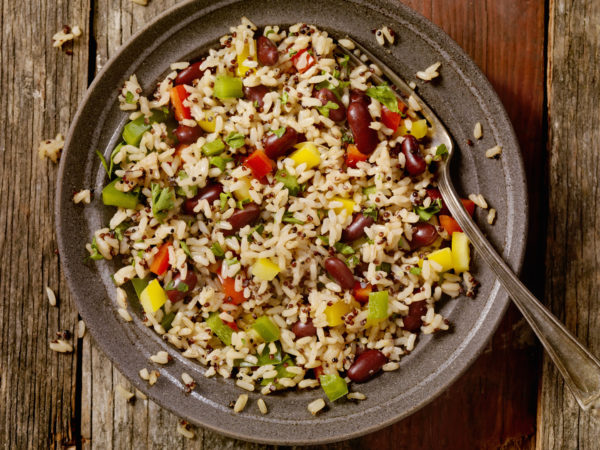Is Resistant Starch Good for You?
What is resistant starch? I’ve been hearing a lot about it, but I’m still not sure whether this is something I should add to my diet. Or is it just fiber?
Andrew Weil, M.D. | April 25, 2014

Starches that resist digestion in the small intestine are termed “resistant.” When they pass into the large intestine, they are typically degraded through fermentation as the result of the action of bacteria, including Bifidobacterium, Clostridium and Bacteroides, which produce enzymes that can break down resistant starches.
Resistant starches are estimated to represent at least 10 percent of the food in the typical western diet. They occur in carbohydrate foods, including slightly green bananas, potato starch, legumes, rolled oats, pearl barley, brown rice and fruit. Consuming resistant starches is said to have the following health benefits:
- Increased intake of dietary fiber, which in turn promotes bowel regularity.
- Increased satiety that allows you to feel full longer after meals and may help with weight control, although this hasn’t been shown in human studies.
- Fewer energy fluctuations, more stable glycemic levels, greater insulin sensitivity and less insulin resistance.
- Improvements in digestive health due to increased numbers of beneficial bacteria and fewer harmful bacteria in the colon.
Resistant starches may also help protect against colon cancer, although this, too, hasn’t been proven. However, according to the National Cancer Institute (NCI) the fermentation of resistant starches in the colon can lead to the production of various short chain fatty acids including one called butyrate, which has anti-inflammatory and immunoregulatory effects and appears to have antitumor effects as well. A study published in 2013 in the American Journal of Clinical Nutrition suggested that greater production of butyrate and other metabolites may explain why colon cancer is less common in native residents of Africa than it is in African Americans.
A review from the University of Colorado Cancer Center suggests that, in the colon, resistant starch promotes the growth of good bacteria while keeping bad bacteria at bay. This may help the body resist colorectal cancer through “mechanisms including killing pre-cancerous cells and reducing inflammation that can otherwise promote cancer.”
In a press release accompanying the publication of her review of studies about resistant starch, Janine Higgins, Ph.D., associate professor of Pediatrics at the University of Colorado School of Medicine and an investigator at the University’s cancer center, said that foods containing resistant starch must be consumed at room temperature or below because “as soon as you heat (them), the resistant starch is gone.” She also suggests that resistant starch may reduce risk of breast cancer. “For example, if you let rats get obese, get them to lose the weight, and then feed half of the rats a diet high in resistant starch — these rats don’t gain back the weight as fast as rats fed a regular, digestible starch diet. This effect on obesity may help to reduce breast cancer risk as well as having implications for the treatment of colorectal cancer.”
Most of what we know about resistant starch today comes from animal studies and small clinical trials. But based on what I’ve read, I think there is value to incorporating some resistant starch in the diet. However, we don’t yet have hard evidence that increasing resistant starch intake will help with weight loss.
Andrew Weil, M.D.
Sources:
Janine A. Higgins, Ian L. Brown. “Resistant starch“Current Opinion in Gastroenterology, 2013; 29 (2): 190 DOI: 10.1097/MOG.0b013e32835b9aa3










